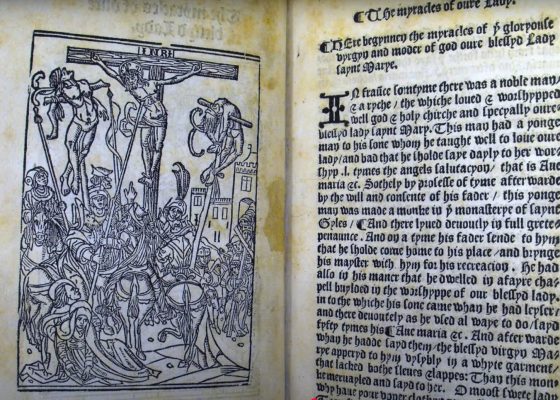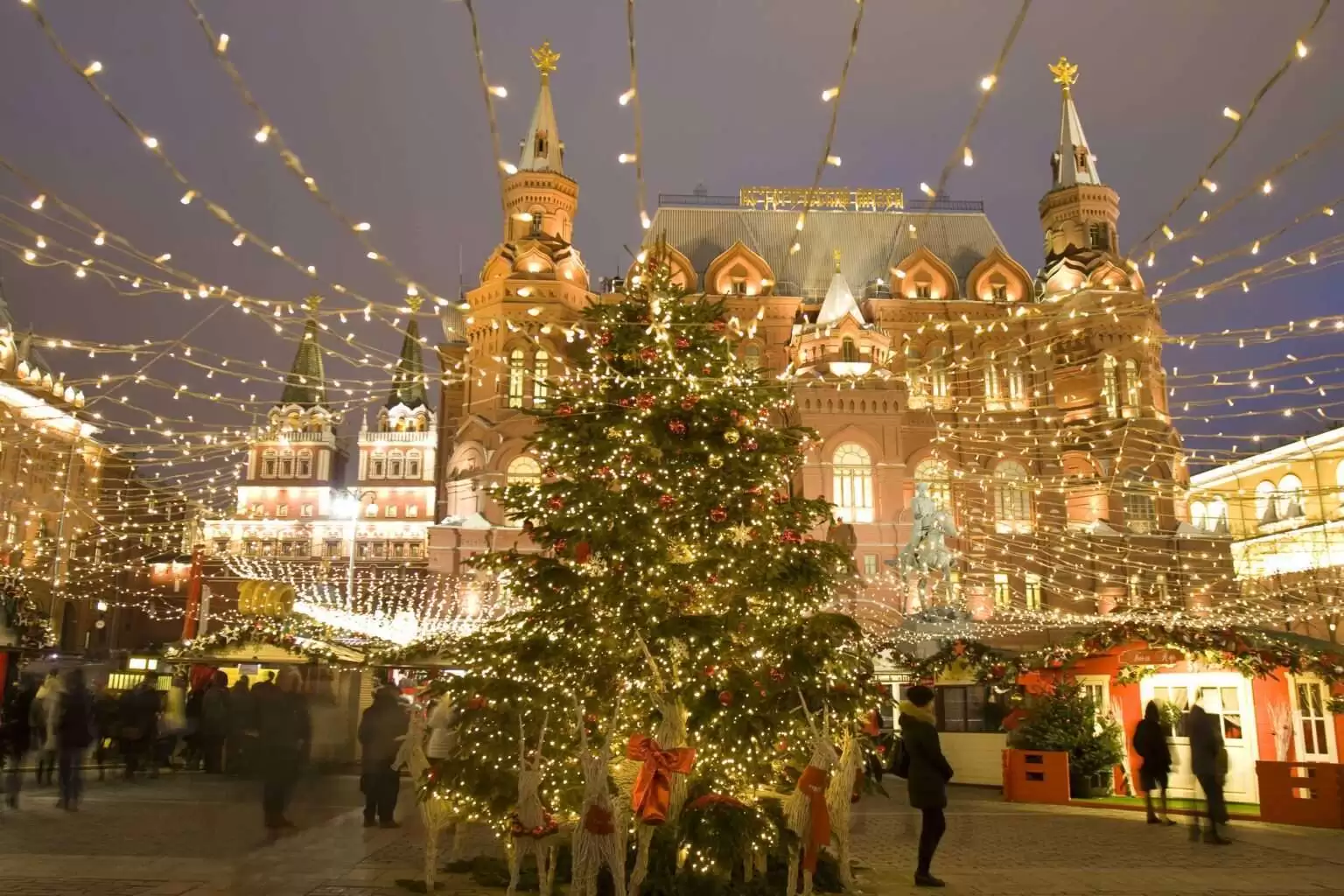
- October 6, 2025

By Evangelina Taurizano
The celebration of Christmas is an event that involves the whole world but, beyond the meaning that is given in each cardinal point, the way of celebrating it can be very different.
The variety of climates makes the festivities adapt as well as the meals that are prepared in each place.
What is undoubtedly common to all cultures is to understand Christmas as a time of reunion and family union. Something infinitely necessary in this year 2020 where family and friends have lived apart due to COVID-19.
I invite you to take a brief tour, we will travel from one hemisphere to another to discover how families prepare to celebrate Christmas.
We started our journey in the United States. Although it is a multicultural country, 90% of its population is Christian and celebrates Christmas.

If we close our eyes and imagine a Christmas there, no doubt in our mind the typical socks hanging from the fireplace will be drawn.
They are a symbol of North American Christmas: the stocking or socks for Santa to fill with sweets and gifts.
Where does the Stocking tradition come from? Legend tells that a nobleman had been left a widower with three daughters. Although he was a rich man, when his wife died, sadness and desolation caused him to lose all his fortune. He wanted to marry off his daughters, but he no longer had the money to do it. One day, Santa Klaus took pity on him and went down the chimney. Finding the socks the daughters had left to dry in the fireplace, he placed a gold ingot inside each of them. Thanks to this legend, both the smallest and the oldest of the family leave a sock in the fireplace, waiting for Santa to leave them a gift.
Another tradition that Americans cannot skip is the Christmas tree. As a kind of ritual, the whole family goes together to buy it. Natural pines are usually purchased from stores known as Christmas Tree Farms. Once they choose the right one, all the family members get together to decorate the tree at home.
If there is something that characterizes Christmas decorations in the United States, it is the lights. Streets, businesses and shopping centers shine day and night with colored lights. The houses are dressed in lights creating designs and figures such as reindeer and stars. This tradition is so important that Christmas decoration contests are organized, families go out to tour the neighborhood with the little ones to enjoy this show.
If we focus on culinary traditions, gingerbread cookies cannot be missed. At Christmas dinner, dishes similar to those on Thanksgiving are prepared, such as the traditional turkey. The children go to bed early to be up the next day and see what presents Santa has left them.
These traditions are very similar to those of the United Kingdom, Ireland, Germany, Australia and the Scandinavian countries.
But in Europe we can find very different celebrations. In Spain and Italy, perhaps because of its origin so deeply rooted in Catholicism, the celebration of Christmas has many points in common and a great religious sense.
The family gathers for the big dinner on December 24. Seafood, roast lamb and for dessert a great panettone (sweet bread filled with dried fruits) are cooked. The whole family waits for the arrival of 12 o’clock, the time when Jesus is born.
The toasts with Cava are endless. Everybody toasts for health and love. After this, everyone runs to the Christmas tree to open the gifts that Santa Claus brings to children and adults.
The celebration usually lasts until long hours of the morning. There is no shortage of nougat, chestnuts, peanuts with chocolate or caramelized.
Latin America, with great influence from both cultures, has a very similar celebration. Although the climate is very hot, since the countries of South America celebrate Christmas in the heat of summer, the tradition in the meals is maintained. Roast suckling pigs and sweet bread crown all Latin tables.
If we decide to fly to Asia, Japan for example, the spirit and celebration of Christmas is totally different. Only 1% of the population of Japan is Christian. However, the party is celebrated but with another spirit.
In this country, Christmas Day is a day to share with friends or as a couple. It’s like the Valentine’s Day version.
Exchanging gifts on Christmas Eve has become a popular tradition among couples, but it doesn’t go any further.
Beyond this, cities are filled with colored lights and Christmas decorations. More than the birth of the baby Jesus, in Japan Christmas is associated with a time of happiness and bliss.
If we get on the Trans-Siberian train, from Japan we will arrive in Moscow, but even if we do it on December 25, we will find that even in this country there are no vestiges of Christmas.
It is that Russia mostly embraces the Orthodox Christian Church that sticks to the Gregorian calendar and, for them, Christmas is celebrated on January 7. January 6 is the eve of the birth of God’s son.

Throughout the centuries Russians have celebrated Christmas with Christmas fights, Christmas mysteries, and public singing.
One of the most popular entertainment is called “boxing.” The “pugilatos” are public fist fights dedicated to the celebration of the Nativity of Jesus Christ. In pre-revolutionary Russia this struggle was an integral part of public festivals.
This kind of old Russian entertainment is not just limited to fights. You can also participate in traditional games of the Russian peasants: competitions of balance, agility and physical power, group fights, and many others.
After the festive fights, the participants sing old Russian folk songs.
In Russia, the meal at Christmas begins with a prayer recited by the father of the family, then the mother blesses each member with a honey cross on their foreheads before beginning to taste the dishes.
The first thing eaten on Christmas Eve is “Pagach”, a lenten bread, dipped in honey, representing the “sweetness of life,” then in minced garlic, portraying the bitterness of life.
Now, we took a plane in Moscow and disembarked in South Africa.
There, Christmas is usually celebrated on the beach, outdoors, in a round, eating a plate of rice and lamb.
Before dinner, South Africans attend church in their typical dress and afterwards, children walk the streets singing Christmas carols.
We could continue to visit each of the places in the world and, although there are different customs and traditions, the truth is that Christmas everywhere is associated with union, with a time of happiness and bliss.
Regardless of the religious sense of the celebration, Christmas is a time of the year when we are ready to share with our closest and dearest ones.










Cancel anytime


Using our website
You may use the The Middle Land website subject to the Terms and Conditions set out on this page. Visit this page regularly to check the latest Terms and Conditions. Access and use of this site constitutes your acceptance of the Terms and Conditions in-force at the time of use.
Intellectual property
Names, images and logos displayed on this site that identify The Middle Land are the intellectual property of New San Cai Inc. Copying any of this material is not permitted without prior written approval from the owner of the relevant intellectual property rights.
Requests for such approval should be directed to the competition committee.
Please provide details of your intended use of the relevant material and include your contact details including name, address, telephone number, fax number and email.
Linking policy
You do not have to ask permission to link directly to pages hosted on this website. However, we do not permit our pages to be loaded directly into frames on your website. Our pages must load into the user’s entire window.
The Middle Land is not responsible for the contents or reliability of any site to which it is hyperlinked and does not necessarily endorse the views expressed within them. Linking to or from this site should not be taken as endorsement of any kind. We cannot guarantee that these links will work all the time and have no control over the availability of the linked pages.
Submissions
All information, data, text, graphics or any other materials whatsoever uploaded or transmitted by you is your sole responsibility. This means that you are entirely responsible for all content you upload, post, email or otherwise transmit to the The Middle Land website.
Virus protection
We make every effort to check and test material at all stages of production. It is always recommended to run an anti-virus program on all material downloaded from the Internet. We cannot accept any responsibility for any loss, disruption or damage to your data or computer system, which may occur while using material derived from this website.
Disclaimer
The website is provided ‘as is’, without any representation or endorsement made, and without warranty of any kind whether express or implied.
Your use of any information or materials on this website is entirely at your own risk, for which we shall not be liable. It is your responsibility to ensure any products, services or information available through this website meet your specific requirements.
We do not warrant the operation of this site will be uninterrupted or error free, that defects will be corrected, or that this site or the server that makes it available are free of viruses or represent the full functionality, accuracy and reliability of the materials. In no event will we be liable for any loss or damage including, without limitation, loss of profits, indirect or consequential loss or damage, or any loss or damages whatsoever arising from the use, or loss of data, arising out of – or in connection with – the use of this website.
Last Updated: September 11, 2024
New San Cai Inc. (hereinafter “The Middle Land,” “we,” “us,” or “our”) owns and operates www.themiddleland.com, its affiliated websites and applications (our “Sites”), and provides related products, services, newsletters, and other offerings (together with the Sites, our “Services”) to art lovers and visitors around the world.
This Privacy Policy (the “Policy”) is intended to provide you with information on how we collect, use, and share your personal data. We process personal data from visitors of our Sites, users of our Services, readers or bloggers (collectively, “you” or “your”). Personal data is any information about you. This Policy also describes your choices regarding use, access, and correction of your personal information.
If after reading this Policy you have additional questions or would like further information, please email at middleland@protonmail.com.
PERSONAL DATA WE COLLECT AND HOW WE USE IT
We collect and process personal data only for lawful reasons, such as our legitimate business interests, your consent, or to fulfill our legal or contractual obligations.
Information You Provide to Us
Most of the information Join Talents collects is provided by you voluntarily while using our Services. We do not request highly sensitive data, such as health or medical information, racial or ethnic origin, political opinions, religious or philosophical beliefs, trade union membership, etc. and we ask that you refrain from sending us any such information.
Here are the types of personal data that you voluntarily provide to us:
As a registered users or customers, you may ask us to review or retrieve emails sent to your business. We will access these emails to provide these services for you.
We use the personal data you provide to us for the following business purposes:
Information Obtained from Third-Party Sources
We collect and publish biographical and other information about users, which we use to promote the articles and our bloggers who use our sites. If you provide personal information about others, or if others give us your information, we will only use that information for the specific reason for which it was provided.
Information We Collect by Automated Means
Log Files
The site uses your IP address to help diagnose server problems, and to administer our website. We use your IP addresses to analyze trends and gather broad demographic information for aggregate use.
Every time you access our Site, some data is temporarily stored and processed in a log file, such as your IP addresses, the browser types, the operating systems, the recalled page, or the date and time of the recall. This data is only evaluated for statistical purposes, such as to help us diagnose problems with our servers, to administer our sites, or to improve our Services.
Do Not Track
Your browser or device may include “Do Not Track” functionality. Our information collection and disclosure practices, and the choices that we provide to customers, will continue to operate as described in this Privacy Policy, whether or not a “Do Not Track” signal is received.
HOW WE SHARE YOUR INFORMATION
We may share your personal data with third parties only in the ways that are described in this Privacy Policy. We do not sell, rent, or lease your personal data to third parties, and We does not transfer your personal data to third parties for their direct marketing purposes.
We may share your personal data with third parties as follows:
There may be other instances where we share your personal data with third parties based on your consent.
HOW WE STORE AND SECURE YOUR INFORMATION
We retain your information for as long as your account is active or as needed to provide you Services. If you wish to cancel your account, please contact us middleland@protonmail.com. We will retain and use your personal data as necessary to comply with legal obligations, resolve disputes, and enforce our agreements.
All you and our data are stored in the server in the United States, we do not sales or transfer your personal data to the third party. All information you provide is stored on a secure server, and we generally accepted industry standards to protect the personal data we process both during transmission and once received.
YOUR RIGHTS/OPT OUT
You may correct, update, amend, delete/remove, or deactivate your account and personal data by making the change on your Blog on www.themiddleland.com or by emailing middleland@protonmail.com. We will respond to your request within a reasonable timeframe.
You may choose to stop receiving Join Talents newsletters or marketing emails at any time by following the unsubscribe instructions included in those communications, or you can email us at middleland@protonmail.com
LINKS TO OTHER WEBSITES
The Middle Land include links to other websites whose privacy practices may differ from that of ours. If you submit personal data to any of those sites, your information is governed by their privacy statements. We encourage you to carefully read the Privacy Policy of any website you visit.
NOTE TO PARENTS OR GUARDIANS
Our Services are not intended for use by children, and we do not knowingly or intentionally solicit data from or market to children under the age of 18. We reserve the right to delete the child’s information and the child’s registration on the Sites.
PRIVACY POLICY CHANGES
We may update this Privacy Policy to reflect changes to our personal data processing practices. If any material changes are made, we will notify you on the Sites prior to the change becoming effective. You are encouraged to periodically review this Policy.
HOW TO CONTACT US
If you have any questions about our Privacy Policy, please email middleland@protonmail.com
The Michelin brothers created the guide, which included information like maps, car mechanics listings, hotels and petrol stations across France to spur demand.
The guide began to award stars to fine dining restaurants in 1926.
At first, they offered just one star, the concept was expanded in 1931 to include one, two and three stars. One star establishments represent a “very good restaurant in its category”. Two honour “excellent cooking, worth a detour” and three reward “exceptional cuisine, worth a
Thank you for your participation,
please Log in or Sign up to Vote

123Sign in to your account